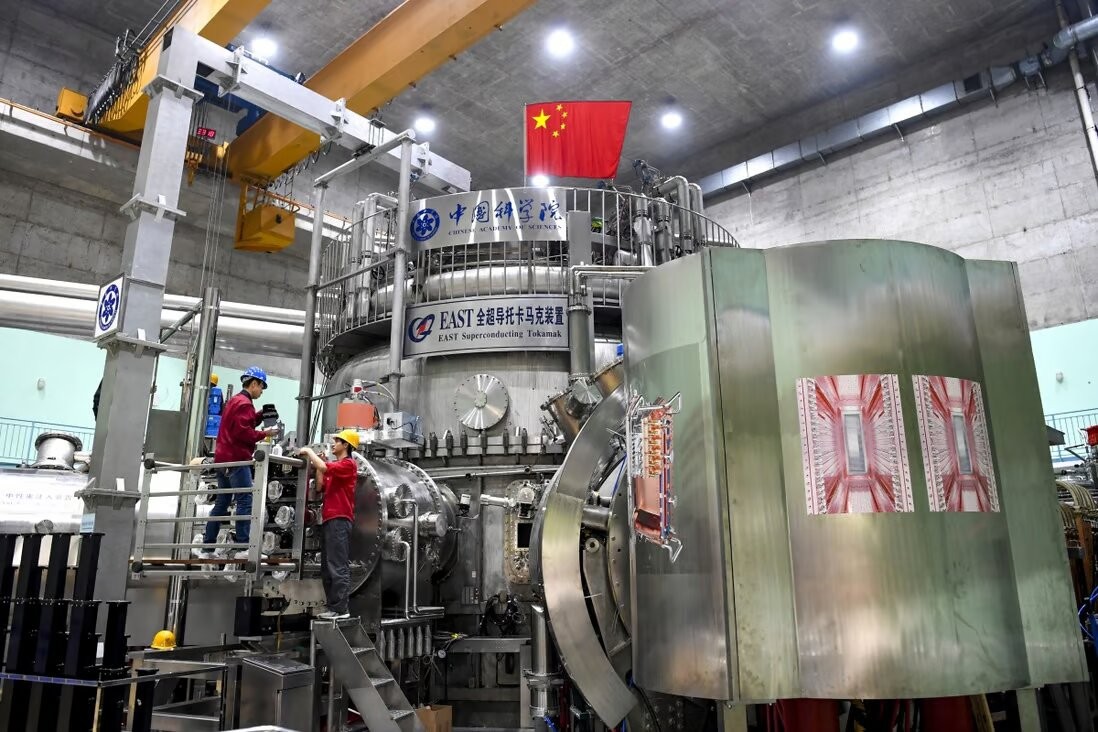 The new improved plasma retention mode has been demonstrated at the Experiment Advanced Superconducting Tokamak (EAST), according to the Hafei Institute of Physical Sciences of the Chinese Academy of Sciences. The new plasma operation scenario, Super I-Mode, discovered and demonstrated by a team from Institute of Plasma Physics at Hefei, was reported in a recent paper published in Science Advances.
The new improved plasma retention mode has been demonstrated at the Experiment Advanced Superconducting Tokamak (EAST), according to the Hafei Institute of Physical Sciences of the Chinese Academy of Sciences. The new plasma operation scenario, Super I-Mode, discovered and demonstrated by a team from Institute of Plasma Physics at Hefei, was reported in a recent paper published in Science Advances.
The new high-conference and self-organising Super I-mode mode "presents the reliability and improvement of the thermonuclear installation itself, and also gives an idea of, how best to maintain a stable and long-term plasma operation", the Institute said.
The discovery was made during the EAST tokamak’s campaign in 2022, during which stationary plasma with a world record pulse duration of 1056 seconds was realised. "Scientists were surprised to find that, compared with the I-diagram, originally observed at another thermonuclear installation, this new mode had significantly improved energy retention, so it was called the Super I-mode", the Institute noted.
The energy configuration in H-mode is achieved without the accumulation of impurities in the nucleus, which leads to a decrease in the radiation of impurities using a metal wall with a high Z and heating ICRF (ion cyclotron frequency range). The I-mode has a stationary temperature podium with edge localised modes, which are usually absent, and the plasma density is controlled by diverter cryopumping.
EAST has now demonstrated energy confinement significantly exceeding the I-mode and comparable to the H-mode. In addition, during long-term high plasma conditions, the thermal load on components exposed to high temperature plasma was moderate due to the lack of large edge localised modes.
Researchers said that in addition to improved energy confinement, the Super I mode also has advantages over other scenarios, for example, there is no central accumulation of metal impurities in the core, the flow of particles on the diverter remains extremely stable, and calm stationary interaction of the plasma with the walls is maintained.
"We maintained the barrier of inland transport of electrons in the centre of the plasma, which worked together with the I-division at the edge, after which the energy was significantly confined," explained Dr Zhang Bin, an operator on the EAST team.
The Science Advances report notes that in order to ensure the feasibility of thermonuclear reactors, it is necessary to maintain the characteristics of the plasma for a long time, which is often limited by the capabilities of the installation and its subsystems, as well as the development of a plasma scenario depending on physics.
Since its first launch in 2006, EAST has been conducting two campaigns every year. Thousands of experiments were conducted independently by the EAST team or collectively with the international thermonuclear community. Each year, EAST accepts worldwide applications for research and international cooperation takes place in conducting experiments and exchanging data.
In addition to improved energy confinement, the Super I mode also has advantages over other scenarios, such as no metallic impurity central accumulation at the core, the particle flux on the divertor remained extremely stable, and sustained quiet stationary plasma-wall interactions. Overall, it could become the basic operation scenario of ITER, the world's largest tokamak.
EAST is an experimental platform that was built with the goal of addressing key technological and physics issues of long-pulse operations, the journal notes. It uses a Tokamak as its technological base. |In May 2022, the machine achieved a plasma temperature of 120 million degrees Celsius for 101 seconds. Shortly after, it lauched its one hundred thousandth shot, followed by a record-long 1,056 seconds for high temperature tokamak plasma at the end of the year.
Scientists immediately began data analysis. They wanted more from the "story behind the record”, said Professor Qian Jinping, deputy head of Tokamak Experiment Division. "We were all excited about the record. That was for sure a milestone of our machine.” He added:
"The machine makes it possible to test ideas, observe physical phenomenon, then we analyse the data to know why." Qian said, elaborating on how an advanced experimental platform facilitates research "every step forward."
Image: The EAST tokamak (courtesy of Hefei Institutes of Physical Science)






